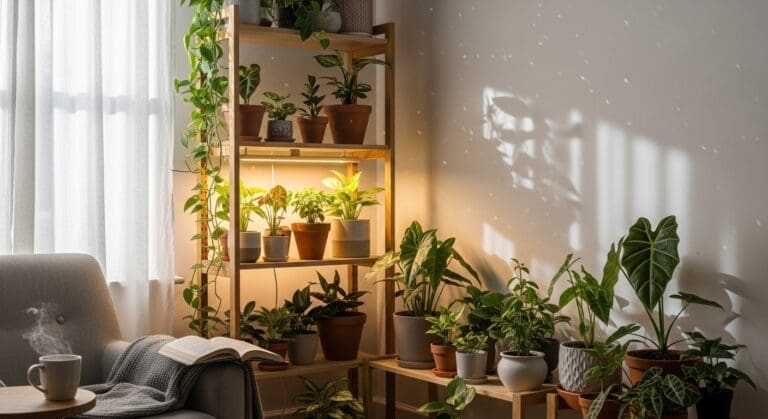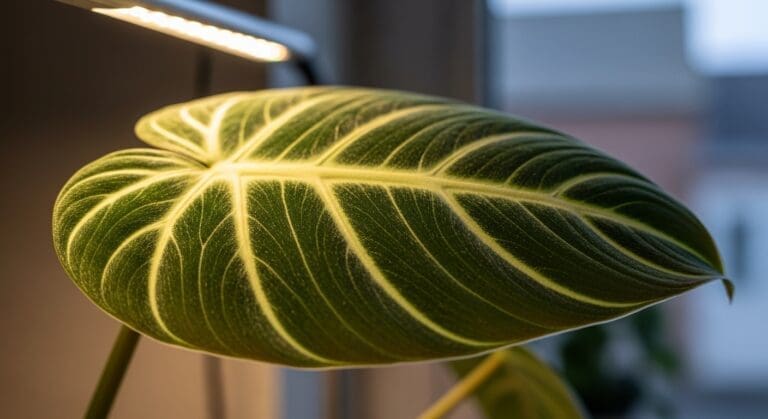Variegated monsteras — with their marbled white, cream, and green leaves — are the crown jewels of many houseplant collections. But their beauty comes with a challenge: getting the light right. Too little light and the white sections can turn brown. Too much, and you risk burning those delicate variegations.
If you’ve ever wondered “Why is my variegated monstera losing its pattern?” or “Will it survive in my bright London flat?”, you’re not alone. The truth is, optimal lighting is the single biggest factor in keeping your plant both healthy and beautiful.
Understanding Variegation and Light Needs
Variegated leaves have less chlorophyll (the green pigment that helps plants make energy from light). This means they can’t photosynthesise as efficiently as fully green leaves — so they need more light to thrive.
However, more light doesn’t mean direct, harsh midday sun. In nature, monsteras grow under the filtered shade of tropical tree canopies. Recreating that balance in a UK or US home is key.
Expert insight: “Variegated plants walk a fine line — they need enough light to maintain their patterns, but not so much that the white tissue burns,” explains Dr. Emily Harper, horticulturist at the Royal Horticultural Society (source).
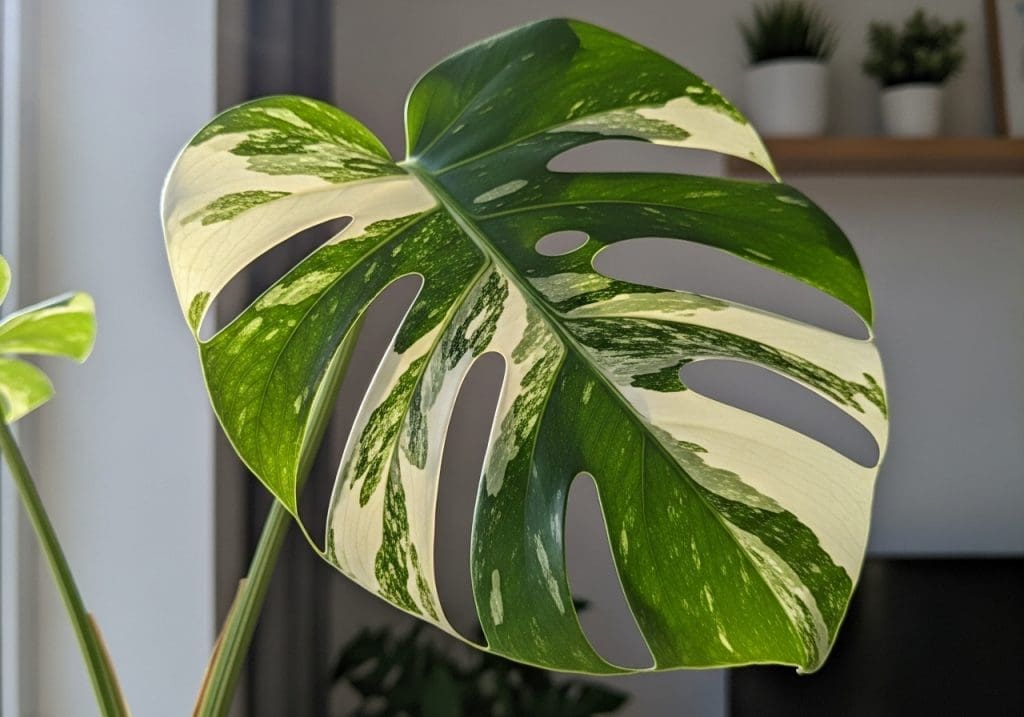
Bright, Indirect Light: The Sweet Spot
The golden rule for variegated monstera growth is bright, indirect light for at least 6–8 hours a day.
- In the UK: A south- or west-facing window with a sheer curtain works well. East-facing windows are great too, as they offer gentle morning light.
- In the US: In sunnier states like California or Texas, keep your monstera a few feet back from south-facing windows to avoid leaf scorch. In northern climates, you can safely move it closer to maximise light exposure.
Tip: If you see your plant’s variegation fading or new leaves with mostly green sections, it’s probably not getting enough light.
Seasonal Adjustments
Light intensity changes with the seasons — something many plant owners forget.
“Last winter, I noticed my monstera’s new leaf was almost entirely green. I realised the weak January light in London simply wasn’t cutting it, so I added a grow light. The next leaf came out with perfect marbling.”
- Winter: Consider supplementing with a full-spectrum LED grow light, especially in northern UK cities or northern US states where daylight is limited.
- Summer: Move your plant slightly further from the window or add a light-diffusing curtain to prevent sunburn.
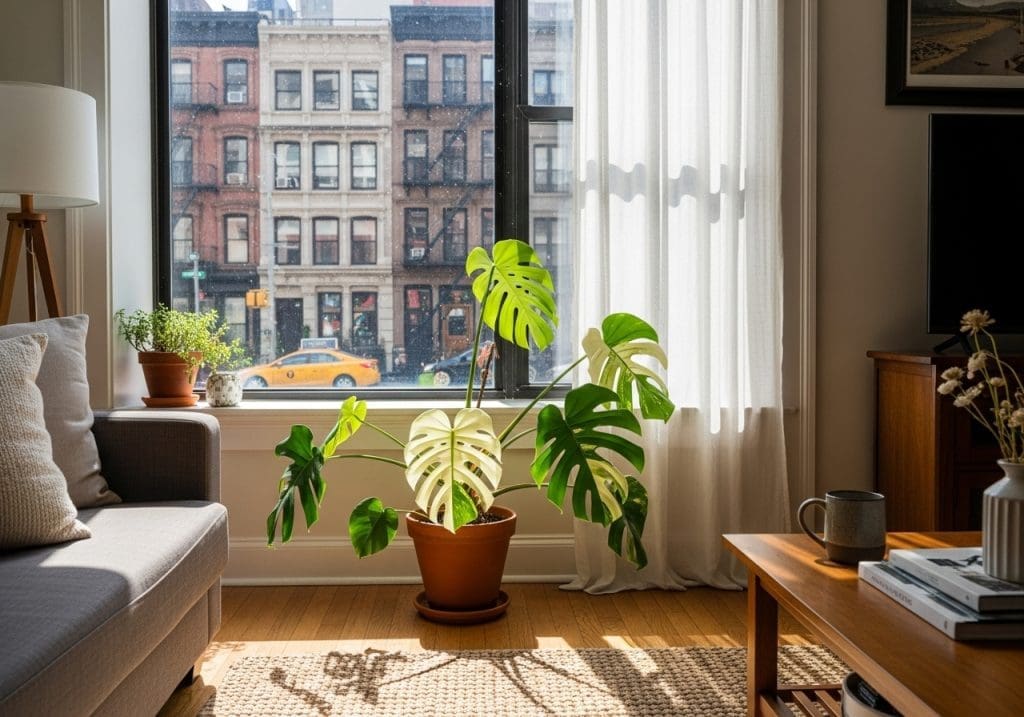
Signs Your Lighting Needs Adjusting
Your plant will tell you if it’s unhappy with its light levels:
- Too little light: Leggy growth, smaller leaves, fading variegation.
- Too much light: Crispy brown edges, yellowing on white sections, leaf scorch marks.
If you notice these changes, act quickly — leaf damage can’t be reversed, but new growth can be healthier once conditions are corrected.
Using Grow Lights for Consistent Results
For many US and UK homes, especially flats or apartments with limited natural light, grow lights are the best solution.
Choose full-spectrum LED grow lights that mimic natural daylight (around 6,500K). Keep them on for 8–10 hours daily, positioned about 12–18 inches above the plant.
Quick tip: Aim to have the light source positioned slightly to the side or above the plant, as direct overhead light can sometimes cause uneven growth.

Window Direction Matters
In the Northern Hemisphere, window direction significantly impacts light exposure:
- South-facing: Brightest light — ideal for variegated monsteras if filtered with sheer curtains.
- East-facing: Gentle morning light — great for avoiding burns, especially in summer.
- West-facing: Strong afternoon light — good in cooler months, but may need filtering in summer.
- North-facing: Usually too dim without supplemental lighting.
Ask yourself: Is my plant’s location giving it a consistent 6–8 hours of bright light year-round?
Pairing Light With Other Care Factors
Light works hand in hand with other care aspects:
- Watering: Plants in brighter light may need more frequent watering.
- Feeding: During the growing season, regular feeding supports healthy variegation.
- Humidity: While light is critical, maintaining at least 50–60% humidity helps prevent leaf edge browning.
Personal Experience: Learning Through Mistakes
“I once placed my monstera right against a sunny south-facing window in July. Within a week, the white sections had brown scorch marks. It was heartbreaking — but also a lesson I never forgot.”
Now, I use a simple light meter app to check my plant’s location. You don’t need fancy equipment — even a phone app can tell you if you’re hitting the sweet spot.
Why Light Quality Matters for UK & US Growers
In the UK, overcast winters mean your plant might go months without strong sunlight. In the US, depending on your state, you could be dealing with the opposite problem: intense, prolonged sun exposure.
Understanding your home’s light patterns — and adjusting seasonally — is what separates thriving variegated monsteras from struggling ones.
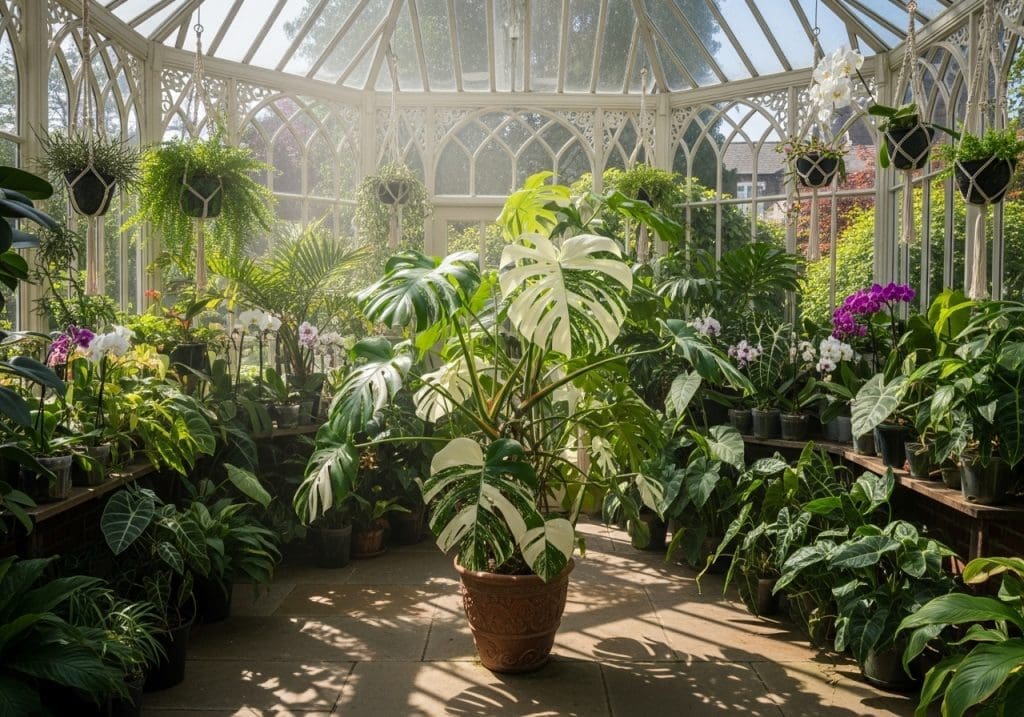
Optimal light for variegated monstera growth isn’t a one-size-fits-all formula — it’s about balance. For UK plant lovers, it often means supplementing in winter. For US growers, it may mean filtering strong sunlight in summer.
Get it right, and your monstera will reward you with those stunning, marbled leaves that make all the care worthwhile.

RarePlantCare Editorial Team produces expert content on rare plants.
Our articles are AI-assisted and human-edited before publication.
We aim to provide practical, evidence-based guides for plant lovers worldwide.
Learn more about our Editorial Policy



